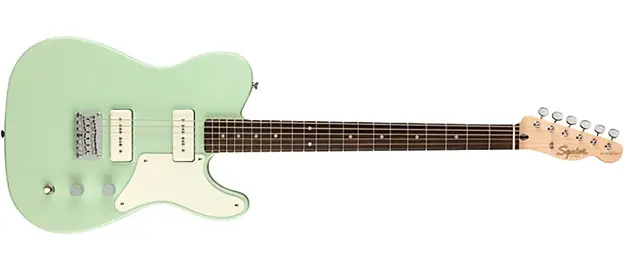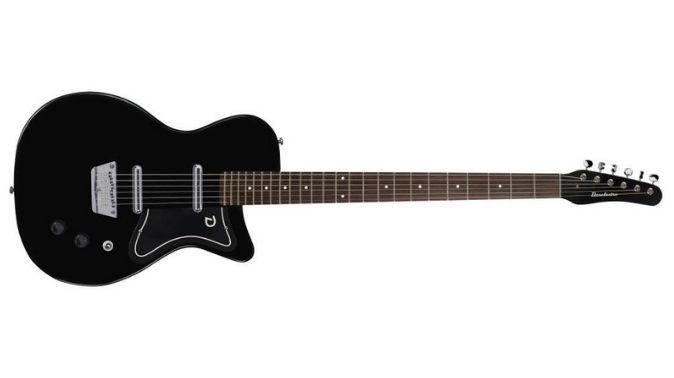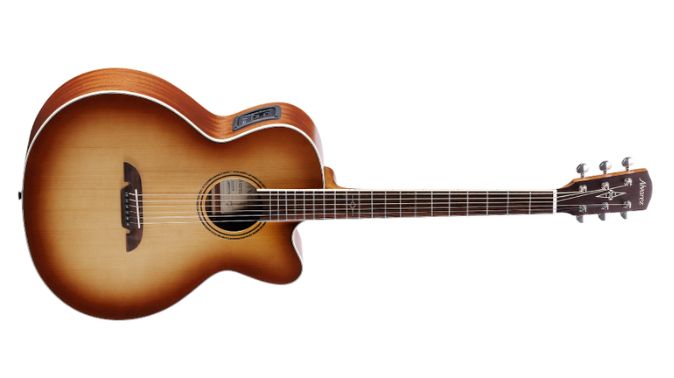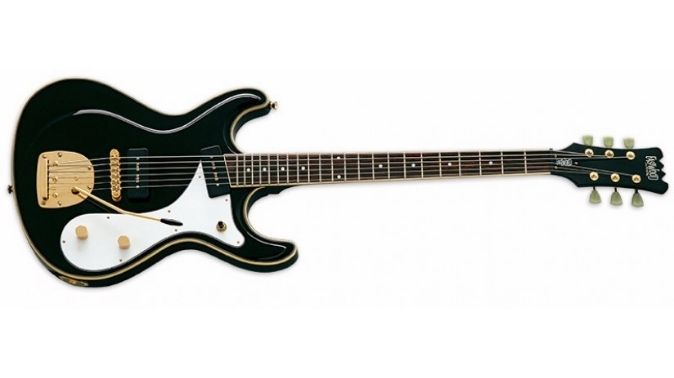The Fender Jaguar Baritone Custom made a splash during its short two-year production run from 2005 to 2007. During that period, the manufactured-in-Japan Jaguar Baritone was billed as a shorter-scale alternative to other baritone-bass hybrids, mixing standard guitar playability with traditional fender tone and earth-shattering low end.
The Jaguar Baritone was originally listed for $699. Today, you can expect to pay between $800 and $1000 on the used market. Is the Jaguar Baritone worth that kind of coin? Should you consider a more affordable in-production model? Does it live up to its original billing as the playable baritone-bass hybrid? We’ve got three things you need to know before you plunk down the nearly one grand required to add the Jaguar Baritone to your arsenal.
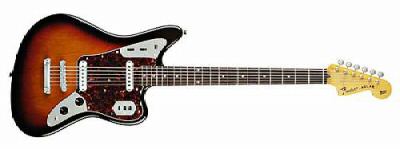
At this point, we should make one thing clear. The Jaguar Baritone Custom is not a true baritone. Instead, it is what I like to call a baritone/bass hybrid.
Like its cousins, the Fender Pawn Shop Bass VI and the Squier Vintage Modified Bass VI, the Jaguar Baritone occupies a sonic estuary between the baritone and the bass guitar by extending the range of a standard bass upward. The two highest strings on the Jaguar Baritone are the same as the two lowest strings on a B standard (aka. perfect fourth) tuned baritone.
In feel and set-up, the Jaguar Baritone seeks to emulate a standard guitar. The result is an instrument that looks and feels like a standard guitar but plays and sounds like a mix between a baritone and a bass.
Now that we’ve covered what the Jaguar Baritone Custom is (and what it is not), let’s look at the three things you need to know before you pick up this unique instrument.
1. The Fender Jaguar Baritone Custom has a truly unique tone. tone Custom
The Fender Jaguar Baritone’s unique place in the sonic landscape of fretted instruments offers a nearly immediate opportunity to stand out. The guitar’s hybrid nature will allow you to solo and play through chord progressions using techniques adapted from standard guitar while delivering earth-shattering lowness and girth.
The modified Jaguar pickups are well suited for the task of maximizing the Jaguar Baritone’s tonal offerings. The guitar’s voice feels like a cross between a Stratocaster and a Les Paul, delivering some of the single coil edge and brightness of a Strat while offering some of the warmth of a Paul.
Artists from Joe Perry of Aerosmith to Robert Smith of The Cure have used Fender baritone-bass hybrids, often to lay down distorted hooks and low melody lines. While the Jaguar Baritone is great distorted, I believe this hybrid sounds best clean. The Jag Bari delivers a clean, balanced response with just the right amount of shimmer.
Try it with a bit of compression and a subtle delay – you’ll find yourself with a captivating tonal experience that can stand on its own.
2. Shorter Scale Increases Playability while Reducing Usability.
The Fender Jaguar Baritone has a scale length (the distance between bridge and nut) of 28.5 inches and comes strung with .25 to .95 gauge strings. Most of Fender’s other baritone-bass hybrids have featured a 30-inch scale length while being set up to hold the same gauge of strings as the Jag Bari.
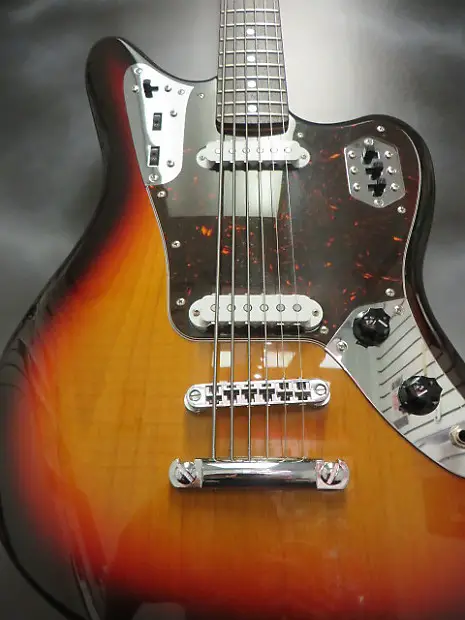
That inch-and-a-half difference may not seem like much, but it comes with two distinct consequences.
First, the Jaguar Baritone Custom feels a bit more like a standard guitar when compared with other baritone-bass hybrids. The shorter scale length means that your chord and melody techniques will crossover with greater ease. For most standard and baritone guitar players, the Jaguar Baritone will feel more playable.
However, that familiar feeling comes at a price. The instrument’s reduced 28.5-inch scale length does not seem to be long enough to sustain sufficient string tension on the Jaguar Baritone’s hefty low E string. The result is a noticeable increase in string buzz.
To mitigate this issue, you can tune the instrument up a step or a step and a half. You can also change up your playing style, focusing on strumming gently, fingerpicking, and traditional bass techniques. However, there is a bit of cruel irony involved in adjusting your technique to avoid string noise on an instrument promoted as offering an easier crossover for traditional guitar players.
3. Price Versus Performance Issues
With Jaguar Baritones fetching $1,000 on the used market, this hybrid instrument is an investment, especially for a working musician or an average-income hobbyist. However, I doubt that most players will get $1,000 worth of use out of the Jaguar Baritone Custom for the following reasons:
- Playing the Jaguar Baritone as a baritone-bass hybrid is most suitable for niche situations, like a one-off singer-songwriter track needing a unique enveloping clean tone or a rock tune that requires a low rumbling hook.
- String noise issues may limit its hybrid guitar technique use.
- The Jaguar Baritone Custom can also serve as a traditional bass, but there are more affordable traditional bass guitars that are more suited for the role.
Conclusion
If you have money and like spending it on guitars, by all means, pick up a Jaguar Baritone Custom on the used market. You’ll add a fine, unique, and well-built hybrid to your arsenal.
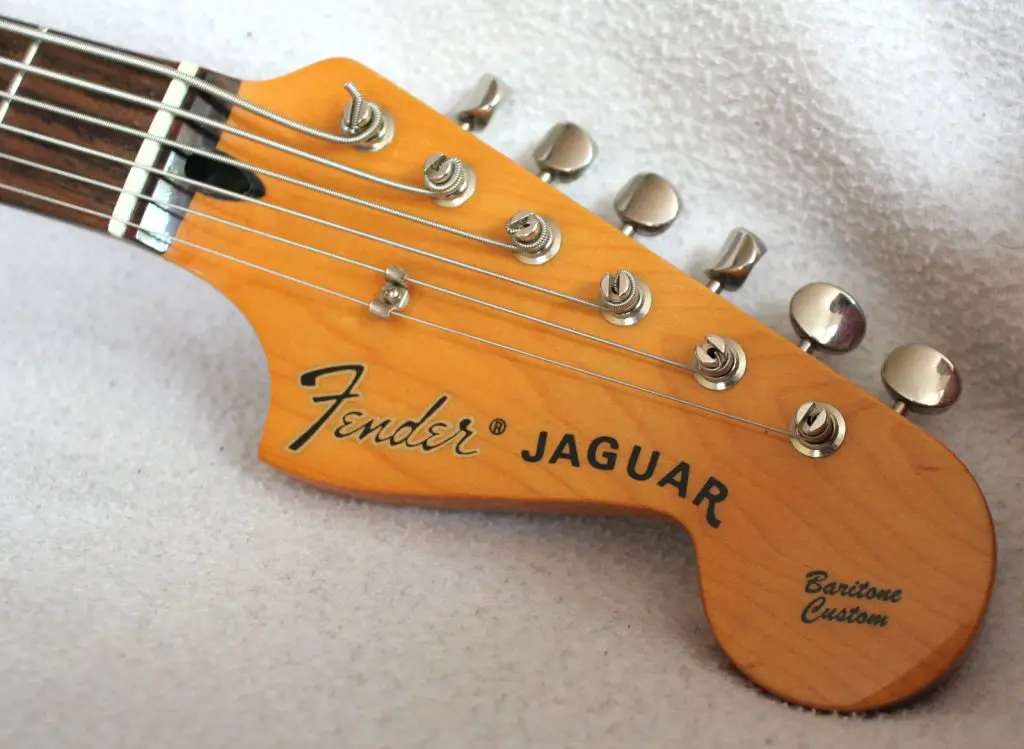
However, for the rest of us, I recommend checking out the Squier Vintage Modified Bass VI. The Vintage Modified Bass VI features a longer scale length than the Jaguar Baritone Custom, which resolves the playability/string noise concerns associated with the Jag Baritone. It’s one of the best-built Squires you’ll ever get your hands on and its price tag is an easier cost to absorb – especially for a baritone-bass hybrid that will most likely never become your primary instrument but instead remain a secret sonic weapon in your arsenal of tones.
Thanks for taking some time to read this article. You can also check out our electric baritone reviews and acoustic baritone reviews.
Key Features & Specs
- 28-1/2″ scale
- Alder body
- Maple neck
- Rosewood fingerboard
- Vintage-style tuners
- 21 medium-jumbo frets
- Two single-coil Jaguar pickups
- Fixed Adjusto-Matic bridge with anchored tailpiece
- Factory Tuning: E-A-D-G-B-E, one octave lower than standard guitar
- String gauge: 25–.35–.45–.55–.75–.95

